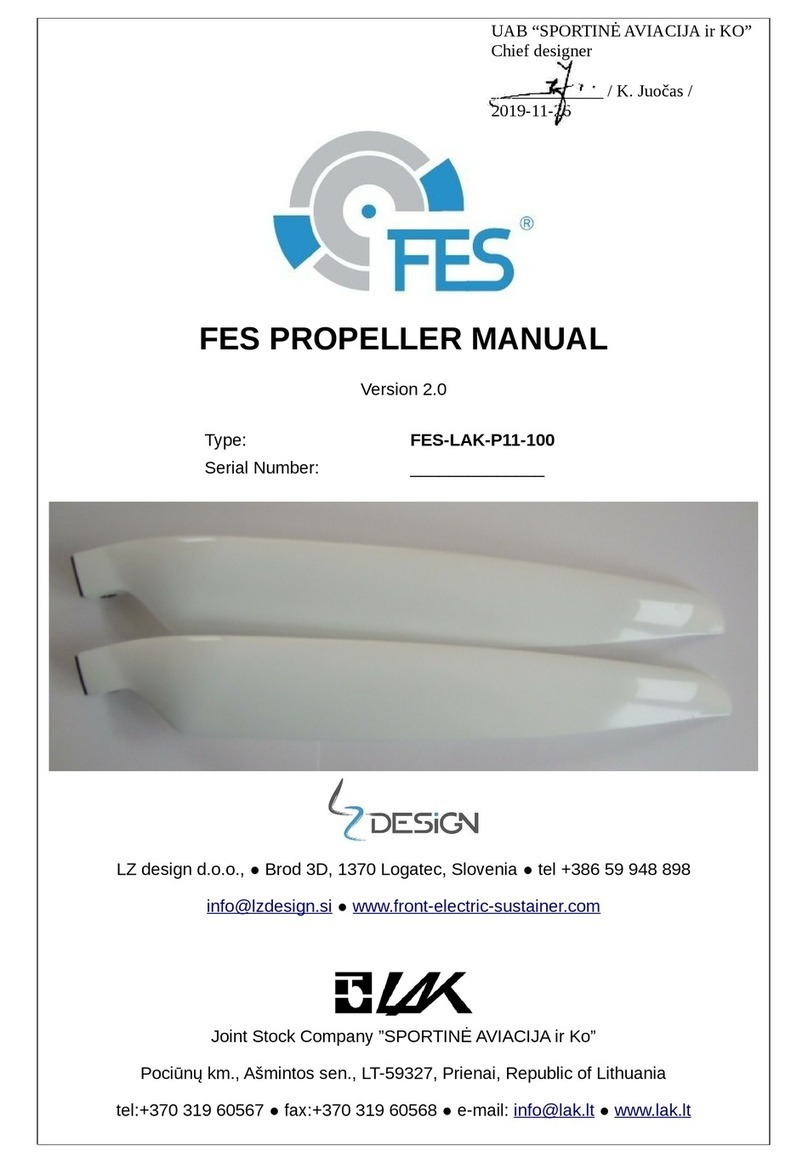FES Propeller Manual Version 1.23 October 2022
Page 3 of 11
1. Important notices
Owners and pilots who use FES system should read this manual thoroughly. It
contains important information about operation, maintenance, and service of FES propeller
blades, having a vital importance to the flight safety.
Caution:
Yellow triangle is shown for parts of the manual which should be
read carefully and are important for proper operation.
Warning:
Notes with a red triangle describe procedures that are critical and
may result in reduced safety or may lead to a critical situation.
Note:
A bulb icon is shown when a useful hint is provided to the reader.
1.1 Limited Warranty
This product is warranted to be free from defects in materials or workmanship for
two years from the date of purchase. Within this period, LZ design will, at its sole option,
repair or replace any components that fail in normal use. Such repairs or replacement will
be made at no charge to the customer for parts and labor, but the customer shall be
responsible for any transportation cost. This warranty does not cover failures due to
abuse, misuse, accident, or unauthorized alterations or repairs.
THE WARRANTIES AND REMEDIES CONTAINED HEREIN ARE EXCLUSIVE AND IN
LIEU OF ALL OTHER WARRANTIES EXPRESSED OR IMPLIED OR STATUTORY, INCLUDING
ANY LIABILITY ARISING UNDER ANY WARRANTY OF MERCHANTABILITY OR FITNESS
FOR A PARTICULAR PURPOSE, STATUTORY OR OTHERWISE. THIS WARRANTY GIVES
YOU SPECIFIC LEGAL RIGHTS, WHICH MAY VARY FROM STATE TO STATE. IN NO EVENT
SHALL LZ DESIGN BE LIABLE FOR ANY INCIDENTAL, SPECIAL, INDIRECT OR
CONSEQUENTIAL DAMAGES, WHETHER RESULTING FROM THE USE, MISUSE, OR
INABILITY TO USE THIS PRODUCT OR FROM DEFECTS IN THE PRODUCT.
Some states do not allow the exclusion of incidental or consequential damages, so the
above limitations may not apply to you. LZ design retains the exclusive right to repair or
replace the parts, or to offer a full refund of the purchase price, at its sole discretion.
SUCH REMEDY SHALL BE YOUR SOLE AND EXCLUSIVE REMEDY FOR ANY BREACH OF
WARRANTY.
To obtain warranty service, contact your local LZ design dealer or contact LZ design
directly.
© LZ design. All rights reserved




























